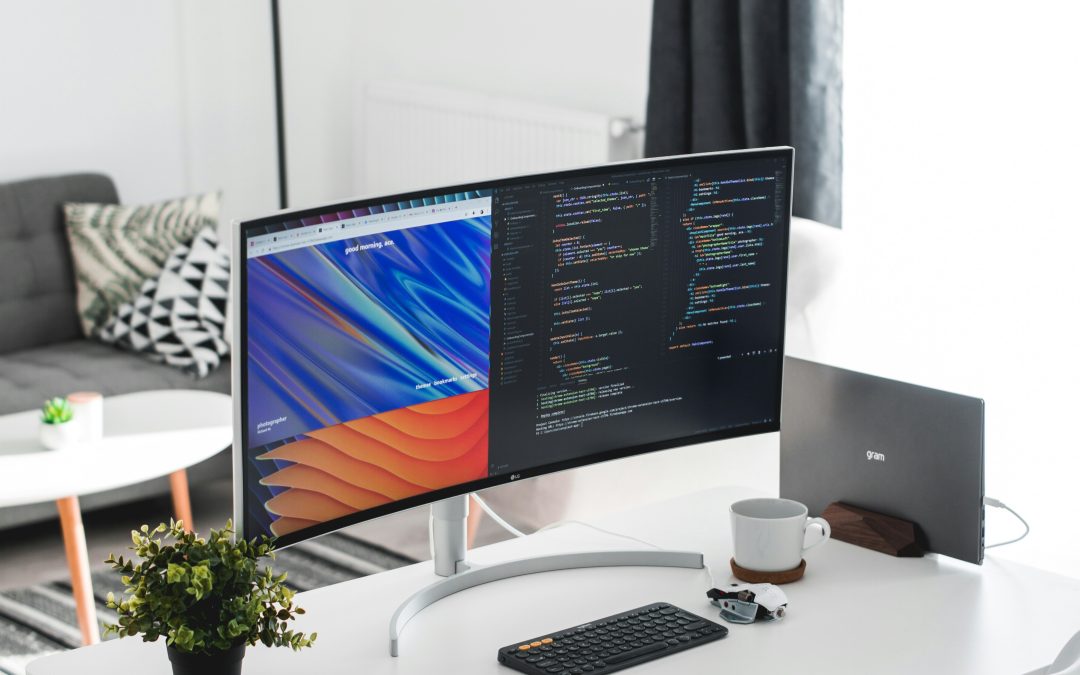In the past few years, the number of people working remotely full-time has grown exponentially. According to research, about 22 million adults in the US now work from home all the time. As remote and hybrid work models become more common, setting up an efficient yet aesthetically pleasing home office has now become more important than ever. This blog provides strategies for designing a functional home office space that keeps you motivated and productive.
Choose the Right Location
The location where you set up your home office significantly impacts your productivity levels. You cannot work in a crowded space with no natural light. Natural light supports focus and energy levels, so try selecting a sunny spot for your home office if available. Minimizing noise from other household activities like a television also helps focus. For privacy, reserve a room like a spare bedroom or basement, or carve out an unused corner of the living area. This way, when you are working from home office, no one will interrupt you while you are at work.
Make sure the selected space allows comfortable seating and working while maintaining ventilation with open windows. The ideal home office location is the one that limits distractions and supports your workspace needs.
Proper Workspace and Storage
Your workspace required two of the most basic, yet primary things. A high-quality ergonomic desk and adjustable chair are two of the core things of any home office. For papers and supplies, incorporate open and closed storage in reach like drawers, shelving, and lockable filing cabinets. You don’t want to waste your energy and time by reaching out to drawers far away from you.
Don’t forget to add wall hooks near the workstation and vertical racks to keep items like bags and accessories organized. Well-lit task areas near the desk let you find materials easily. Personally, I like my stuff within my hand’s reach, so I don’t have to get up every time. You can create order and efficiency by having proper workspace arrangements.
Lighting and Electrical Setup
Direct task lighting above the work surface prevents eyestrain and keeps your eyes protected all the time. Multiple electrical outlets placed accessibly on lamp posts and power strips power devices off a single switch. Recessed ceiling lights lend ambient comfort. Since you spend ample time here daily in your home office space, you have to prioritize lighting customization for your wellness. Hands-free solutions like motion-sensor lamps provide convenience. Proper lighting designs set the ideal ambiance and ease workflow.
Wall Décor and Signage
While working remotely, small decorative touches boost enthusiasm. Hang inspiring quotes, wall decals, art, images, or plants near your desk for visual stimulation. Maybe an image of you receiving an award? A quote from your favorite author? Some greenery would improve the scenery and refresh the air in the room. Moreover, you can put well-lit bulletin boards and vertical wall calendars for reminders and schedules at a glance. Have some floating shelves arranged tastefully to hold important reference materials. Personalized décor can relieve stress and help maintain focus during long workdays.
Soft Seating and Accessories
Beyond functional setups, comfort becomes crucial after hours of sitting. Potted plants, area rugs, and window curtains lend a relaxed vibe. Feature lounge chairs and ottomans for casual meetings or coffee breaks away from the desk. Tray tables hold workplace essentials and double as servers during informal gatherings. Small decorative accents like picture frames, lamps, and desk organizers keep the space arranged appealingly. Balance functionality with aesthetics and comfort.
Organizational Hacks
Multiple projects in hybrid schedules require systematic workflows. It is better to carefully label all the dividers, bins, boxes, and hanging racks to help organize your paperwork neatly by category. Cloud storage and digital organizational tools declutter physical files, and hence they are easy to maintain and organize. Wall planners book meeting dates transparently. Outlook calendar encourages collaboration for deadlines. Whether you prefer paper-based or digital methods, all the structured organization methods that we mentioned above optimize the productivity of your home office.
In conclusion, designing a multipurpose and inspiring home office allows smooth transitioning between work and personal modes. Stay focused with ergonomic furniture arrangements and well-placed lighting and storage solutions. Personalized soft furnishings and décor maintain enthusiasm during long work hours. Organizational methods let you access materials conveniently and track progress transparently. The design strategies outlined here help craft an efficient yet uplifting home office environment conducive to focus and creativity. Stay tuned for more home remodeling tips.
FAQs:
Q: What is the most suitable room for a home office?
A: A spare bedroom, basement, or enclosed corner is ideal as it provides privacy and minimizes distractions.
Q: What furniture is essential for a home office?
A: An ergonomic desk and comfortable office chair are key to support long hours of sitting. Drawers and shelving provide necessary storage.
Q: How can lighting be arranged for eye comfort?
A: Dedicated task lighting over the work area and recessed ceiling lights prevent eyestrain. Lamps and power strips supply multiple devices conveniently.
Q: What small décor additions boost productivity?
A: Pictures, plants, soft furnishings, and organized desk accessories make the workspace inspiring. Calendars and boards help manage schedules visually.
Q: How to maintain an organized filing system?
A: Labelled storage containers, cloud tools, and wall planners help file and access papers, projects, and meetings in an organized manner.
https://unsplash.com/photos/turned-on-flat-screen-tv–WBYxmW4yuw?utm_content=creditShareLink&utm_medium=referral&utm_source=unsplash


